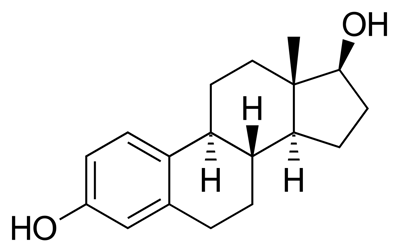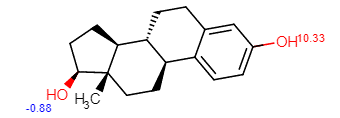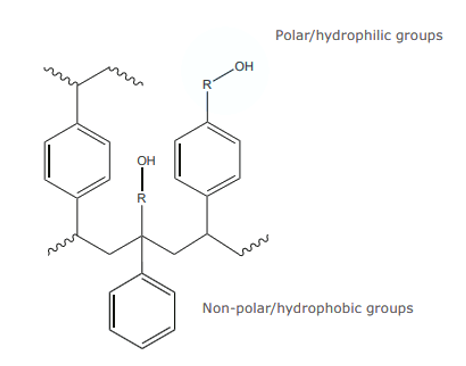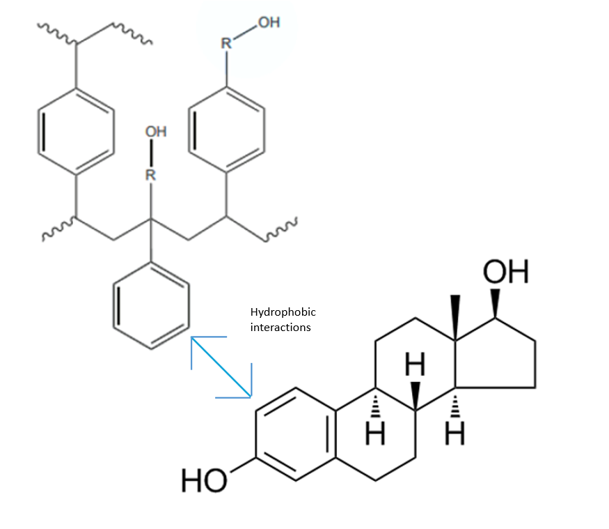Jun 27, 2023 3:40:10 PM
How do neutral analytes and SPE EVOLUTE® ABN work?
By Amber Cain

We know that compounds can be acidic, basic, and neutral. Looking at pKas and functional groups can help us understand the best approach and steps for SPE selection and workflow. Let’s look at the compound, estradiol.

Figure 1. Structure of estradiol.
When we originally look at the structure, we see the conjugation through the benzene ring. This conjugation will increase our hydrophobic bonding. Now let’s look at the pKa’s of the functional groups.

Figure 2. Estradiol pKas are added per Chemicalize.
In figure 2, we can see our strongest acidic pKa is 10.33, and our strongest basic pKa is -0.88. By looking at our EVOLUTE® Express User Guide we know that the acidic pKa is extremely weak, and our basic pKa is also extremely weak. Since we don’t have either acidic or basic ions to exploit, our compound is considered neutral, and we are relying on the hydrophobic interactions to retain estradiol on the sorbent.
 Figure 3. EVOLUTE®ABN Sorbent, notice the modified polystyrene divinylbenzene polymer which allows the sorbent to be water wettable.
Figure 3. EVOLUTE®ABN Sorbent, notice the modified polystyrene divinylbenzene polymer which allows the sorbent to be water wettable.
Per Figure 3 the ABN sorbent has non-polar/ hydrophobic groups that will interact with our conjugated ring and polar groups which will interact with our polar alcohol groups. We can see in Figure 4 the hydrophobic interactions.
 Figure 4. Here we see the overlay where the hydrophobic interactions are occurring between the ABN sorbent and estradiol.
Figure 4. Here we see the overlay where the hydrophobic interactions are occurring between the ABN sorbent and estradiol.
Now let’s see how each step occurs in the ABN as seen in AN922.
In this example, we are working with human urine and will use the EVOLUTE Express ABN 10 mg plate (p/n) 600-0010-PX01.
| Steps | Description | What’s happening? |
| Sample Pre-treatment (1) | 20 µL of a 10 pg/µL methanolic ISTD to 200 µL of human urine; final concentration 1 ng/mL. | Adding the internal standard first is important as you are going to normalize to this during analysis. Typically avoid doing more than 10% volume internal standard addition. |
| Sample Pre-treatment (2) | Dilute sample 1:1 (v/v) with water and mix. | Diluting the sample will help decrease viscosity allowing it to more readily flow through the SPE sorbent. |
| Condition (optional) | 500 µL methanol | This is optional when using the EVOLUTE Express line due to the water-wettable functional groups (and frits). |
| Positive Pressure | Recommend positive pressure. | Avoids variable well-to-well flow-through. |
| Equilibration (optional) | 500 µL 0.1% formic acid in water | This is optional when using the EVOLUTE Express line due to the water-wettable functional groups (and frits). |
| Positive Pressure | Recommend positive pressure. | Avoids variable well-to-well flow-through. |
| Sample Loading | 400 µL of pre-treated urine to each well | This is the recommended load capacity. |
| Positive Pressure | Recommend positive pressure. | Avoids variable well-to-well flow-through. |
| Wash 1 | 500 µL water | Remove polar interferences such as salts and small proteins. |
| Positive Pressure | Recommend positive pressure. | Avoids variable well-to-well flow-through. |
| Wash 2 | 500 µL water/methanol (60:40 v/v) | Removes some hydrophobic compounds such as phospholipids and lysophospholipids. |
| Positive Pressure | Recommend positive pressure. | Avoids variable well-to-well flow-through. |
| Elution | 200 µL methanol | Breaks the hydrophobic bonds between the analyte and sorbent by removing all aqueous solvents. |
| Positive Pressure | Recommend positive pressure. | Avoids variable well-to-well flow-through. |
| Dry Down | Stream of air or nitrogen | Nitrogen is typically preferred to prevent oxidation and purity prevents contamination. |
| Reconstitution | 0.2 mM ammonium fluoride in water: methanol (1:1) | Mass spectrometry suitable solvent. |
The typical process for ABN sample preparation is based on the limited ion-exchange abilities of your analytes of interest. In figure 3 we mentioned the added benefit of the polymeric sorbent. Why is this important? In traditional silica based SPE, you had to condition and equilibrate your sorbent and frits, which were hydrophobic. With this polymeric SPE product, both the sorbent and frits are water wettable and with an aqueous sample, the sorbent is able to interact with your sample without conditioning and equilibration. This also has the benefit of removing the variability of wells drying out during your analysis. This is especially beneficial if you are working with a 96-well plate and well A1 might be solvated several minutes before H12; the water-wettable capability of the EVOLUTE Express line minimizes the risk of wells drying and well-to-well variability in your application results.
Published: Jun 27, 2023 3:40:10 PM


